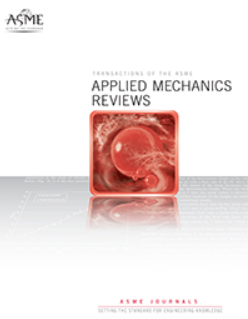振动对滑雪板稳定性和边缘控制的影响
IF 16.1
1区 工程技术
Q1 MECHANICS
引用次数: 1
摘要
背景:在雕刻转弯过程中,当脚后跟向侧面滑动时,通过边缘摩擦在滑雪板的脚跟处引起振动,并随后沿着板和铲移动,从而振动并影响边缘控制。本研究的目的是找到一种方法来评估边缘抓地力与激光振动计。方法:两个板,加载和倾斜在四个不同的角度,被放置在一个柔软的表面,与一个振动筛连接到脚跟在最后面的边缘点。用Polytec激光振动计扫描铁铲,特别是最前端边缘点。记录相干性、平均铲移和最前端边缘点位移的频响函数,并对后者进行积分,得到边缘迁移度度量(EMM),以量化边缘控制。结果:在两种板的对比中,A板的铲在第1和第3扭转模式下更硬,B板的铲在弯曲模式下更硬。第二种扭转模式是负责大的边缘振动,因此减少边缘控制。铲B在较大的倾斜角下具有较小的EMM,即最前端边缘点的振动幅度较小,因此具有较好的边缘控制。然而,铲A在较小的倾斜角度下具有较小的EMM。结论:本研究的方法为在标准化测试条件下评估滑雪板的刃控提供了可靠的测试方法。本文章由计算机程序翻译,如有差异,请以英文原文为准。
Vibrations Affecting Stability and Edge Control of Snowboards
Background: During a carving turn, vibrations are induced at the heel of the snowboard through edge friction when the heel slips sideways and subsequently travel through and along the board to the shovel, which vibrates and affects the edge control. The purpose of this study was to find a method for assessing the edge grip with a laser vibrometer. Method: Two boards, loaded and tilted at four different angles, were placed on a soft surface, with a shaker connected to the heel at the hindmost edge point. The shovel and particularly the frontmost edge point were scanned with a Polytec laser vibrometer. The frequency response functions of coherence, average shovel displacement, and displacement of the foremost edge point were recorded, and the latter was integrated for obtaining an edge mobility measure (EMM) to quantify the edge control. Results: Of the two boards compared, the shovel of board A was stiffer in the 1st and in the 3rd torsional mode, and the one of board B was stiffer in bending modes. The 2nd torsional mode was responsible for large edge vibrations and therefore for a diminished edge control. Shovel B had a smaller EMM at greater tilt angles, that is, less amplitude of the vibrations at the frontmost edge point, and therefore a better edge control. Shovel A, however, had a smaller EMM at smaller tilt angles. Conclusion: The method developed in this study provides a reliable test for assessment of edge control of a snowboard under standardized test conditions.
求助全文
通过发布文献求助,成功后即可免费获取论文全文。
去求助
来源期刊
CiteScore
28.20
自引率
0.70%
发文量
13
审稿时长
>12 weeks
期刊介绍:
Applied Mechanics Reviews (AMR) is an international review journal that serves as a premier venue for dissemination of material across all subdisciplines of applied mechanics and engineering science, including fluid and solid mechanics, heat transfer, dynamics and vibration, and applications.AMR provides an archival repository for state-of-the-art and retrospective survey articles and reviews of research areas and curricular developments. The journal invites commentary on research and education policy in different countries. The journal also invites original tutorial and educational material in applied mechanics targeting non-specialist audiences, including undergraduate and K-12 students.

 求助内容:
求助内容: 应助结果提醒方式:
应助结果提醒方式:


